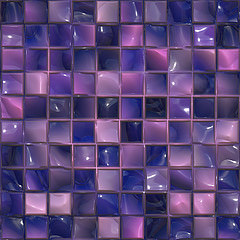Tile that’s Gorgeous *and* Green
 There are two strong trends in tile these days. The first is the use of new technology and out-of-the-box thinking to create handsome styles that appeal to the senses, while the second is an increasing focus on environmentally friendly materials and manufacturing. Whether you are choosing tile for a kitchen backsplash, bathroom shower surround or bedroom floor, you can have the best of both worlds. Here are some of the most notable tile fashions today.
There are two strong trends in tile these days. The first is the use of new technology and out-of-the-box thinking to create handsome styles that appeal to the senses, while the second is an increasing focus on environmentally friendly materials and manufacturing. Whether you are choosing tile for a kitchen backsplash, bathroom shower surround or bedroom floor, you can have the best of both worlds. Here are some of the most notable tile fashions today.
Cork
Cork, commonly known for its use in plugging wine bottles, has grown in popularity as tiling for floors, walls and even bathrooms. In addition to its attractively earthy appearance, cork is prized for its resilient comfort underfoot and its noise-buffering qualities. It is naturally and sustainably sourced from the bark of the cork oak, which can be harvested about every seven years without destroying the tree. An even greener source of cork tiles is recycled cuts from wineries’ stopper production.
Glass
Glass tiles create a lovely shimmering effect and are available in a wide range of colors. Subtle “beachy” shades such as aqua or sand are very much in vogue. Glass tiles are frequently created from very green sources: recycled waste products from the manufacturing process or even post-consumer waste – used food containers, old CCRT televisions and computer monitors. Despite their humble origins, however, one drawback of glass tiles is that they can be extremely expensive, costing as much as ten times the price of regular tile.
Porcelain
Porcelain tile originates from a sustainable source (clay and minerals) and due to the large number of manufacturers throughout the country, does not add to its carbon footprint through long distance shipping. (For example, if you are planning a Milwaukee tile project, you can obtain materials from a nearby Wisconsin plant.) New ink jet glazes can give porcelain tile an enormous variety of finishes; trending now is the look of highly polished, glossy wood. Tile resembling slate, stone and quartzite are also in style, as are innovative patterns and textures. Look for 3D effects like woven or beveled tiles.
Metal
Metal tile is made from materials such as stainless steel or metal resin. Very durable, it will not crack or chip and is excellent for covering damaged areas of your walls. Its sleek modern look makes it a perfect choice for today’s chic industrial style décor. Metal tile may be made of as much as 100 percent recycled material; this is especially important if you opt for aluminum, due to its slow biodegrability.
Pebbles
As their name suggests, pebble tiles are created from small stones. These are bits of rock collected from a beach or river, sea glass or pebble-shaped chunks of basalt or porcelain. They may be used as is, or processed by slicing or polishing. The pebbles are adhered to a web backing for easier installation. Generally pebble tile has an uneven raised texture which is meant to evoke the feeling of walking along the seashore. Pebble tile is sustainably sourced, non-toxic and recyclable. One drawback is that it can be difficult to clean.
Reclaimed
Reclaimed vintage or antique tile will bring a rich patina and a sense of history to your makeover project together with the environmental benefit of repurposing. Because these tend to be costly and possibly hard to match, use a few carefully selected tiles as accent notes. You may salvage tiles yourself from building sites (with permission, of course) or seek them out through dealers and online sources. Avoid reusing any tile with a lead-based glaze.
Laura Firszt writes for networx.com.
Looking for a Pro? Call us (866) 441-6648

Tile Average Costs
Tile Contractors Experiences

Oak Tree Planting Looks Great In Our New Home’s Spacious Yard

My Remodeled Bathroom Is Modern, Clean And Beautiful



